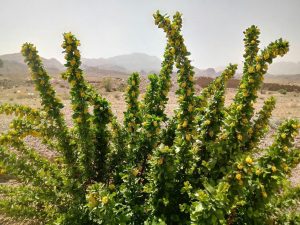Persian Barberries: A Tart Treasure of Iran
Tart red gems add a vibrant twist to Iran’s cuisine and culture. Known as “zereshk,” these tiny fruits grow in regions like Khorasan. For example, their tangy taste brightens rice dishes like zereshk polo. This article explores why these delights are cherished, how they’re used in cooking, and their health benefits. Plus, we’ll dive into their cultural role, harvesting, and growing global appeal. As exporters of saffron, nuts, and more, we share Iran’s finest treats too. So, discover why Persian barberries are a gem, how they enhance meals, and why they’re loved worldwide. Join us to uncover this tangy delight and see what makes it a unique treasure!
Introduction
Tart gems sprinkle a red magic into Iran’s food and traditions. These small fruits, called “zereshk” in Persian, grow in dry regions and pack a tangy punch. They’re loved in dishes and home remedies across the land. We export saffron, nuts, and dates, including these berries, but this isn’t just about trade—it’s about their story. This article covers their culinary uses, health perks, and cultural ties. Let’s savor Persian barberries!
The Roots of Barberries in Iran
Zereshk have grown in Iran for centuries. They thrive in places like South Khorasan, where dry heat ripens them. Long ago, farmers dried them for winter meals. Today, Iran produces over 11,000 tons yearly, mostly for local use. For example, families pick them by hand in fall. So, these berries tie Iran to its ancient fields.
Why These Berries Are Cherished
These tart delights shine for simple reasons. First, Iran’s climate makes them extra tart and bright. Next, their ruby-red color pops in dishes. Also, they’re dried naturally, keeping their zing. Compared to other fruits, Persian barberries have a sharper taste. As a result, they’re a favorite in Iran and abroad.
How Barberries Are Harvested
Picking zereshk is a gentle task. Here’s how it goes:
- Growing: Bushes bloom in spring, berries ripen by fall.
- Picking: Hands pluck them carefully to avoid thorns.
- Sorting: They’re cleaned to remove leaves and stems.
- Drying: Berries dry in shade to keep their color.
- Packing: Finally, they’re ready for kitchens or markets.
So, this careful process keeps these berries fresh and tangy.
Barberries in Persian Cooking
These tart gems star in the kitchen. For example, zereshk polo mixes them with rice and saffron for a sweet-tart dish. They’re also sprinkled on salads for a zesty kick. Another use? Cook them into jams or sauces for meat. Some even brew them as tea. Because of this, Persian barberries are a must in meals.
Health Benefits of Barberries
Zereshk are small but mighty. For instance, they’re packed with vitamin C for immunity. They’ve got antioxidants to fight bad stuff in your body. Plus, they help digestion with their fiber. Another perk? Some studies say they balance blood sugar. So, these berries bring wellness with their tang.
Barberries in Persian Culture
These delights aren’t just food—they’re culture. For example, they’re on Nowruz tables for renewal. Families share zereshk polo at weddings for joy. Also, old tales say they ward off sickness. Another tradition? Gifting them for health wishes. Because of this, Persian barberries hold a special place in Iran’s heart.
Barberries and Iran’s Life
Zereshk shape Iran’s daily life too. They support farmers in Khorasan and beyond. Since they grow in tough lands, they’re a reliable crop. They also add color to bazaars and meals. We export saffron, nuts, and these treats, tying them to Persian pride. So, these berries are a local lifeline.
Global Appeal of Barberries
People outside Iran love zereshk more each day. Why? First, they add a tart twist to dishes. Next, health fans use them in teas or smoothies. Also, they’re sold dried in global markets. For instance, chefs toss them in grain bowls. Iran shares these tart gems with the world. So, their fame is spreading.
Challenges with Barberries
Growing these fruits can be tricky. For example, drought cuts harvests in Khorasan. Then, thorns make picking slow and hard. Plus, drying them right takes skill to keep the flavor. However, Iran works to keep Persian barberries top-notch and available.
Opportunities to Share Barberries
There’s room to grow with zereshk. For instance, organic ones could sell big. Also, making barberry powders or candies is a fun idea. Another way? Sell them online to reach more folks. We’re all in on sharing these treasures. So, these berries have a bright future.
How to Pick the Best Barberries
Want great zereshk? Here’s what to check:
- Feel: They should be dry, not sticky.
- Look: Bright red means they’re fresh.
- Taste: Tart with a hint of sweet is best.
- Source: Get them from us—we promise quality!
This way, you enjoy top berries every time.
Barberries Around the World
These treats flavor life beyond Iran. In Iran, they’re in polo and teas. In Europe, they’re in sauces or desserts. In Asia, folks add them to rice or soups. For example, you can sprinkle them on yogurt too. Because of this, Persian barberries bring tart joy everywhere.
The Future of Barberries
The future looks good for these fruits. New farming tricks can fight drought. Also, people love tangy, healthy foods like zereshk. We’re ready to share awesome barberries, saffron, and more. So, these tart gems will stay a tasty star for years.
Conclusion
Persian barberries mix tart flavor with deep roots. People in Iran and beyond love their taste, benefits, and stories. If you’re a cook or curious, these delights call you. We send Iran’s best with care. Want some? Contact us to try these tangy treats. Let’s share this gift together!


